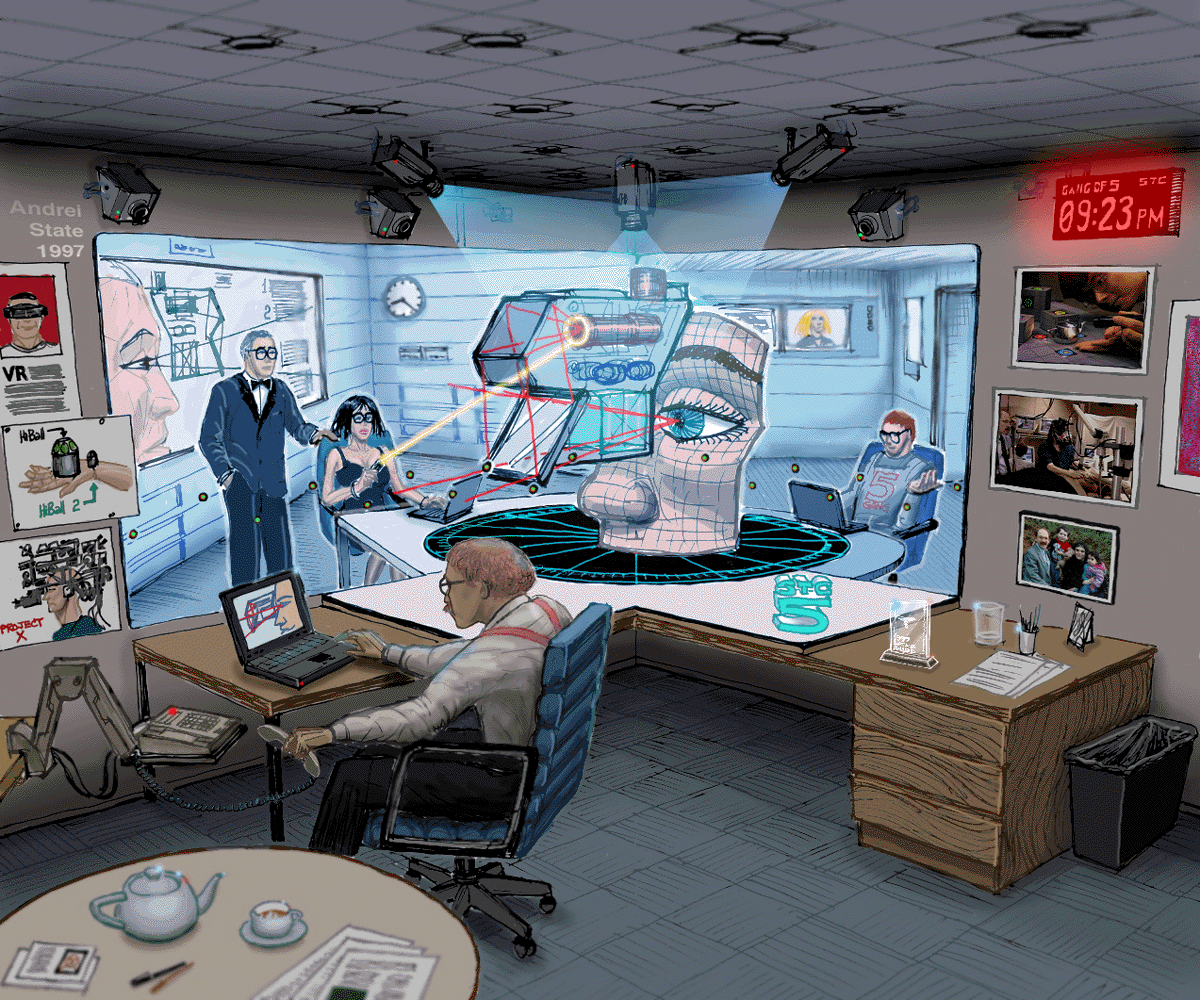The Jigsaw of Return
If leaving the office was hard to do, returning will be fraught with more difficulty.
Just like a champagne cork once removed expands and does not fit, it will be hard to put work back in the office.
Both, the decisions on what a “return to the office” means and how the decisions are made and conveyed are likely to have as great an impact on the culture and competitiveness of a firm in the next few years as any corporate or product strategy.
What a firm decides will at minimum impact its ability to a) attract and retain talent, b) cost structure, c) culture d) client and customer service levels and e) ability to innovate.
That’s all.
A way forward.
After a first burst of non-nuanced, tone-deaf, future-fearing decision making about the end of Zoom meetings, the implication that those who hustle and care are the ones who want to return, and the laying down the law of how many days everyone needs to come back, the opposition of an empowered workforce alive to new possibilities has required re-thinking.
It is not going to be as easy as issuing blanket edicts.
Instead, it will be a jigsaw puzzle of different approaches for different people, different roles, different markets, and it will be a work in progress with many benefits and challenges.
The smartest firms and leaders are approaching these key decisions with a combination of these best principles
Communicating an understanding that going back to March 2020 makes ZERO sense unless one wants to go out of business.
Recognizing that hybrid is really a spectrum.
Sharing key principles and beliefs driving the thinking.
Following a software model of decision making.
1) Communicating an understanding that going back to March 2020 makes no sense for most industries and firms.
The past year has surprised everybody about the many myriad benefits of distributed work.
For employers these have included, a) no significant drop in productivity, b) the ability to combine teams from all over the world to increase collaboration and work product, c) attract a far more diverse work force d) significant cost savings through reductions in travel, real estate and sometimes talent costs and e) progress towards their green goals as they reduce their carbon footprint.
For employees the benefits have included a) more flexibility to be with family and live-in different places, b) significant reduction in wasted time of having to travel to work or between Client meetings, c) ability to “see” senior management and have their “voice” heard, d) cost savings from reduced transport and other work-related costs and e) ability to have global demand for their time and a wider swath of opportunities.
While there have been significant benefits there have also been several challenges.
Employers worry about a) how to build a culture, on-board and train folks, b) how to maintain the creativity and relationship building that often needs the electrifying connection of people interacting in person or coming together in unplanned encounters and c) how to ensure a work life balance.
Employees want to get back with other folks to a) leave the narrow confines and loneliness of home, b) meet new people and build relationships and c) learn from the observations and interactions that only real world connections may make possible.
Most smart companies want to find a way to preserve as many benefits as possible of yesterday’s model of full time in the office and this past year’s world of working from home while solving for the drawbacks and challenges of each.
Thus, a key for every firm and leader is to stop using the words “going back” but “moving forward” and replace the mindset of “returning” to that of “starting anew”.
Any company starting fresh today with the technologies available today and soon available tomorrow (5G, Voice, AR, AI and Quantum based cloud computing) would never have a set up like companies did at the end of 2019 and hope to be compete from a cost, agility and talent attraction perspective.
2) Recognizing hybrid is a spectrum.
There is now however a new emerging mindset that hybrid is not as simple as some days at the office and some days at home. Instead, one needs to think about how to put the pieces together of The Unbundled Workplace.
The Unbundled Workplace will combine four spaces:
a) Home: The safety, the flexibility, the ability to focus (especially if school resumes and children are not underfoot), and the cost and time savings of not having to travel to work will ensure that the home office will be foundational space that most people will spend significant time getting work done.
b) Distributed Work Pod: Either to enable gathering of teams or the option to work outside the home many companies will sub-lease space (e.g., We Work, Regus) near where clusters of their employees live. This will enable teamwork and getting away from home with a far more time and carbon friendly footprint.
c) Periodic Events/Experiences: Automattic (owners of WordPress and Tumblr) is a 1800 person global company where everyone works distributed but teams get together at a location of the team’s choice (often exotic ones) for a few days every quarter to collaborate, build relationships and learn from each other. Every year for one week the entire company gets together for education, inspiration, and bonding. Increasingly companies will create periodic events and experiences to offset the downsides of working in a distributed model which are difficulty in establishing and building relationships, culture sculpting and skill enhancement. There is no reason that this needs to be done in the offices left behind or a large capital expenditure needs to be allocated to re-configure spaces when far more impactful and cost-effective external options are available.
d) The Legacy Office (aka the Museum): The old central office or HQ will remain but will be significantly downsized and be more of a gathering space for some key training or client meetings, a roosting place for senior management and a museum of relics and artifacts that are the key to the story telling and culture of the company. Most employees will likely spend less than a third of their working year at this office.
3) Sharing key principles and beliefs driving the thinking.
Once companies remind people they are not trying to go back to the past and recognize that the future of work will incorporate a spectrum of locations they need to lay down certain beliefs and principles that they are basing future workspace plans on:
For instance:
We believe that in our creative industry it is key that people get together from time to time to collaborate, connect, and build on ideas. Thus, we are going to ask people to come to a common location x days a month.
Our legal and other constraints imply that our offices and employees need to work in these states. While we will work to expand these today, we need to work within these and other legal constraints.
We serve Clients and they will expect a certain level of service which will include a certain number of in-person interactions. We need to make sure we remain competitive versus others.
In certain markets people do not have the space to work from home and we need to ensure we have a space for them to work every day.
While we believe in flexibility, we believe we also need to have some firm guidelines and expectations for everybody to ensure fairness and clarity. For instance, we want to ensure that someone who works primarily remote does not get penalized regarding promotions versus someone who works in person.
The idea here is to treat everyone like adults and share both the first principles and constraints that one is working with. This will help people understand why certain decisions are being made.
Some basic rules and minimum expectations offer greater clarity than anything goes. Companies cannot be managed by commune. To have flexibility one needs to have a framework.
It is likely people will challenge and provide improvements to the framework. This is part of the process of indicating both clarity and listening.
4) Following a software model of decision making.
There is never going to be a solution or solutions what will make everybody happy.
The jigsaw of return cannot be solved elegantly with every piece fitting but if people see the big picture you are trying to solve for, they are more likely to accept or resent less whatever decisions are being made.
How the decisions are made may be as important as what decisions are made.
The reality is no one has really done this before and there will be much learning along the way.
For instance, many companies are not going to have fixed spaces for teams to sit in but follow a hotel concept when one checks in and gets assigned a desk. On paper this sounds cool but if you think one click below it is questionable because if the reason you want people to be at work is to have teams work together but now, they can sit anywhere how is it better than they operating from home in the first place? Unless teams are in the office together and co-located to some degree one gets all the downsides of an office with none of the upsides of working from home!
We will all make mistakes like this (or maybe it is not a mistake). Therefore, consider a software release mindset with the first guidelines being an alpha followed by a beta and then a 1.0. Maybe in six to nine months into the process there will be a working process that then can be modified every six months or a year. Build in room for continuous learning and improvement.
Communicate that the return is a journey in which all of us travelers and the terrain are different than when everyone departed the office 15 months ago and we are all going to solve the puzzle together.





